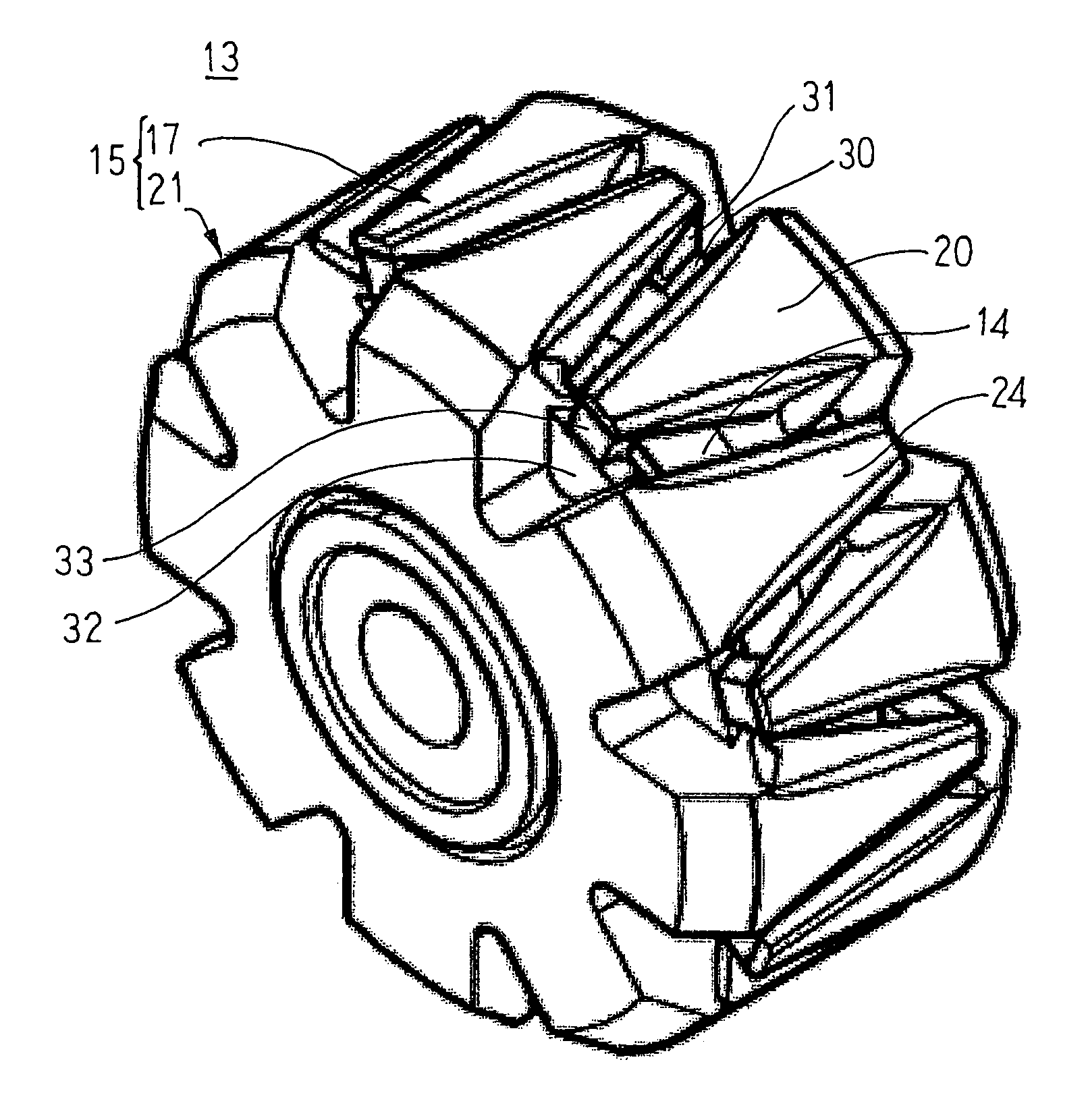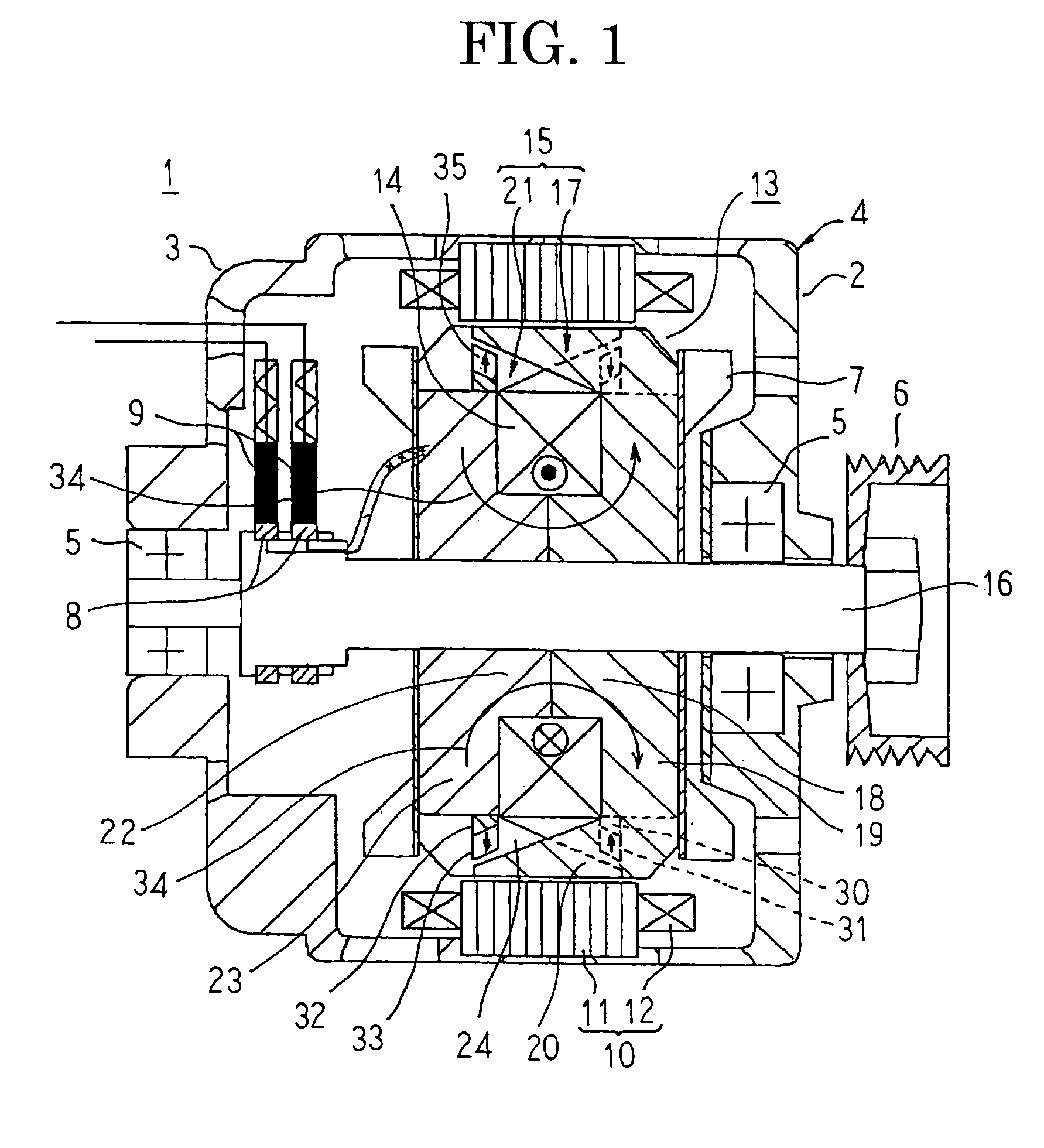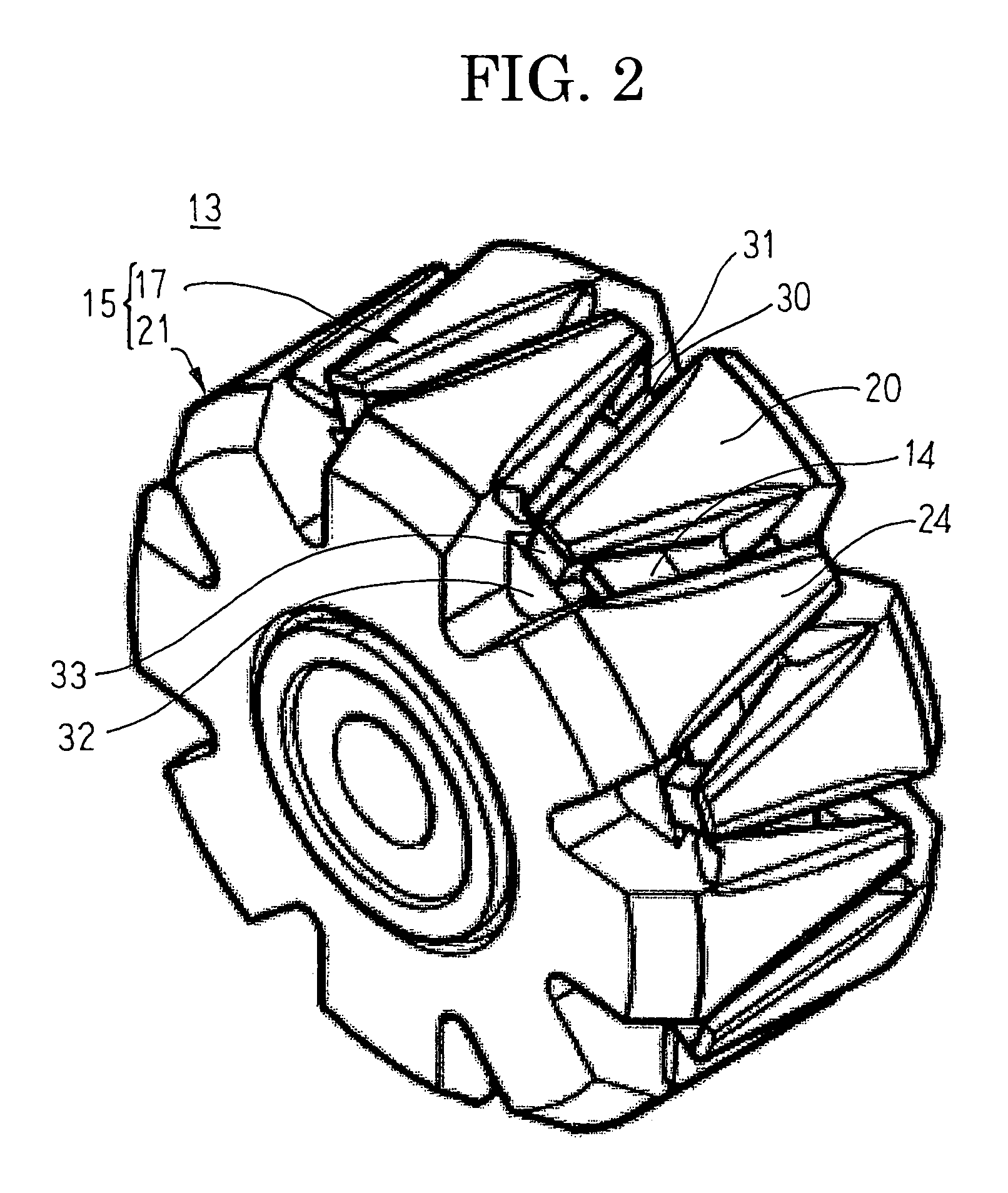Dynamoelectric machine
a dynamoelectric machine and rotor technology, applied in the direction of magnetic circuit rotating parts, magnetic circuit shape/form/construction, windings, etc., can solve the problems of increasing the inertia of the rotor, and invariably increasing the size of the alternator, so as to facilitate the holding reduce the moment of inertia that accompany the disposition of the permanent magnet, and reduce the centrifugal force tha
- Summary
- Abstract
- Description
- Claims
- Application Information
AI Technical Summary
Benefits of technology
Problems solved by technology
Method used
Image
Examples
embodiment 1
[0059]FIG. 1 is a cross section that schematically shows an automotive alternator according to Embodiment 1 of the present invention, FIG. 2 is a perspective that shows a rotor that can be used in the automotive alternator according to Embodiment 1 of the present invention, and FIGS. 3 and 4 are respective schematic diagrams for explaining flow of magnetic flux in the automotive alternator according to Embodiment 1 of the present invention.
[0060]In FIGS. 1 and 2, an automotive alternator 1 includes: a case 4 that is constituted by a front bracket 2 and a rear bracket 3 that are each made of aluminum so as to have an approximate cup shape; a rotor 13 that is rotatably disposed inside the case 4 such that a shaft 16 is supported by means of bearings 5 in the case 4; a pulley 6 that is fixed to an end portion of the shaft 16 that projects outward at a front end of the case 4; fans 7 that are fixed to two end surfaces in an axial direction of the rotor 13; a stator 10 that is fixed to t...
embodiment 2
[0090]In Embodiment 1 above, the direction of magnetization 35 of the first and second permanent magnets 31 and 33 is oriented radially, but in Embodiment 2, a direction of magnetization 35 of first and second permanent magnets 31 and 33 is inclined toward a field coil 14 relative to a radial direction.
[0091]Moreover, the rest of the configuration is configured in a similar manner to Embodiment 1 above.
[0092]In FIG. 7, the first permanent magnets 31 are formed so as to have parallelogrammatic cross sections, and are fixed to upper surfaces of the first magnet seats 30 so as to face the inner circumferential surfaces of the tip end portions of the second claw-shaped magnetic pole portions 24 using an adhesive, etc., so as to be magnetically connected. The upper surfaces of the first permanent magnets 31 are approximately parallel to the inner circumferential surfaces of the second claw-shaped magnetic pole portions 24 so as to have a predetermined clearance. The directions of magneti...
embodiment 3
[0117]FIG. 13 is an end elevation that shows a rotor that can be used in an automotive alternator according to Embodiment 3 of the present invention.
[0118]In FIG. 13, tapered grooves 50 that function as interfitting recess portions are disposed so as to extend axially on outer circumferential surfaces of a second yoke portion 23 that are positioned between second claw-shaped magnetic pole portions 24 of a second pole core body 21 so as to have internal shapes in which two side walls slant inward. Second permanent magnets 33 are also formed so as to have trapezoidal cross sections that fit together with the tapered grooves 50. The second permanent magnets 33 are press-fitted into the tapered grooves 50 from axially outside, and held.
[0119]Although not shown, tapered grooves 50 are also disposed so as to extend axially on outer circumferential surfaces of a first yoke portion 19 that are positioned between first claw-shaped magnetic pole portions 20 of a first pole core body 17. First...
PUM
 Login to View More
Login to View More Abstract
Description
Claims
Application Information
 Login to View More
Login to View More - R&D
- Intellectual Property
- Life Sciences
- Materials
- Tech Scout
- Unparalleled Data Quality
- Higher Quality Content
- 60% Fewer Hallucinations
Browse by: Latest US Patents, China's latest patents, Technical Efficacy Thesaurus, Application Domain, Technology Topic, Popular Technical Reports.
© 2025 PatSnap. All rights reserved.Legal|Privacy policy|Modern Slavery Act Transparency Statement|Sitemap|About US| Contact US: help@patsnap.com



